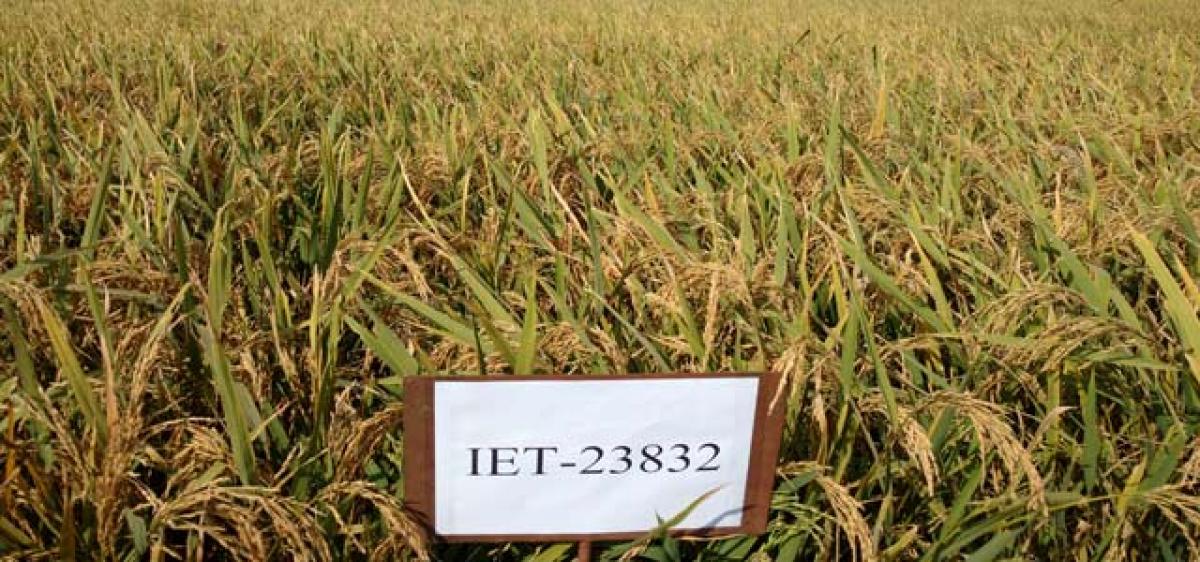Live
- CM exhibits ignorance with his statements on Guv: Kishan
- Amid buzz over arrest, KTR says he is ready to go to jail
- Govt trying to grab lands for a song: BJP MP
- BRS an obstacle for investments: Jagga Reddy
- TGPSC all set for holding Group-III exams
- Delays dog LRS cases as applications pile-up
- TGSPDCL deploys 101 ERT vehicles
- JIH to host national conclave in city
- OU celebrates National Library Week with book exhibition
- Prakash Utsav to be celebrated today
Just In

Do you know that the rice we normally consume is shorn of its actual nutritional elements by the time it comes on to your platter?
Hyderabad: Do you know that the rice we normally consume is shorn of its actual nutritional elements by the time it comes on to your platter?
Rice loses 90 percent of nutrients when polished and around 5 percent to 10 percent while being washed before cooking.
And ultimately, whatever remains in the rice after cooking are carbohydrates. However, the recent development of a new variety of rice fortified with extra dose of zinc has proved to be the solution to minimise the loss of crucial nutrients during all these processes.
The Hyderabad-based Indian Institute of Rice Research (IIRR) has developed a new rice variety - DRR Dhan 45 - in which the zinc content is retained even after polishing and washing.
According to Dr Ravindra Babu, Director, IIRR, this variety has been released in Telangana, Andhra Pradesh, Karnataka and Tamil Nadu. “By next year we want to distribute it to 10,000 farmers in these four states,” he told The Hans India.
Elucidating on its intrinsic values, Dr Ravindra Babu said that the content of zinc retained in the IIRR variety is 22 PPM (parts per million), which is higher than the international standard of 20 PPM required in the polished rice.
“Moreover, it is also a high-yielding variety,” he said and added, “We have already achieved food security, and now with this new variety we have moved another step ahead to accomplish nutritional food security.
Zinc is an important nutrient for cell physiological activities. More than 200 cell activities are dependent on zinc. “Women need zinc four times more than men. Zinc is a necessity for conceived women for the growth of the child in the womb.
It is important for the development of the brain and other organs of the child,” Dr Ravindra Babu pointed out and said that children up to five years of age who have sufficient zinc will have resistance to diarrhoea.
By:Satyapal Menon

© 2024 Hyderabad Media House Limited/The Hans India. All rights reserved. Powered by hocalwire.com







